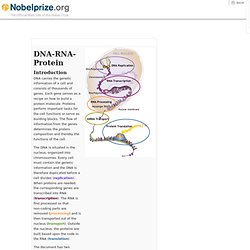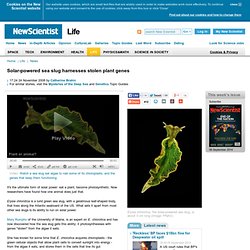

Cell Models. For life all cells have basic needs.

Cells have diverged in their structure and function to accommodate these survival requirements. Here are some KEY TERMS to help you think, explore and search for similarities and significant differences that have become the characteristics of eukaryote (animal, plant) and prokaryotic (bacteria) cells. Examples might be searching: eukaryote prokaryote reproduction or animal plant cell energy. Reproduction / cell division Energy trapping, storage and consumption Form / shape / structure Cell specialization Compartmentalization of cell functions Communication within and beyond the cell Cell / organism survival. DNA-RNA-Protein. DNA carries the genetic information of a cell and consists of thousands of genes.

Each gene serves as a recipe on how to build a protein molecule. Proteins perform important tasks for the cell functions or serve as building blocks. The flow of information from the genes determines the protein composition and thereby the functions of the cell. The DNA is situated in the nucleus, organized into chromosomes. Solar-powered sea slug harnesses stolen plant genes - life - 24 November 2008. Video: Watch a sea slug eat algae to nab some of its chloroplasts, and the genes that keep them functioning It's the ultimate form of solar power: eat a plant, become photosynthetic.

Now researchers have found how one animal does just that. Elysia chlorotica is a lurid green sea slug, with a gelatinous leaf-shaped body, that lives along the Atlantic seaboard of the US. Animal and Plant Cell Differences, Cell Biology Homework. Inside a Cell.